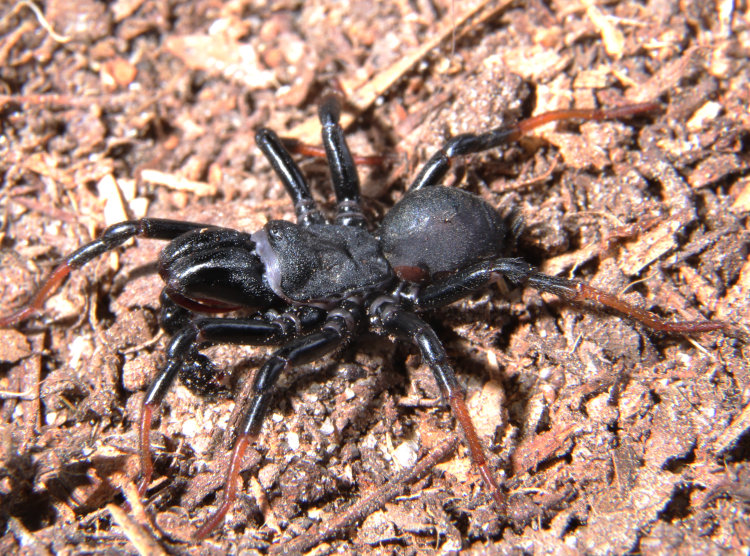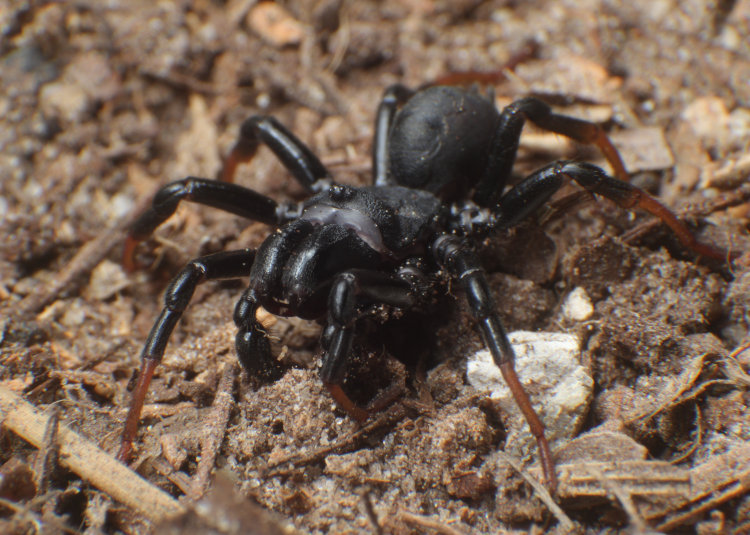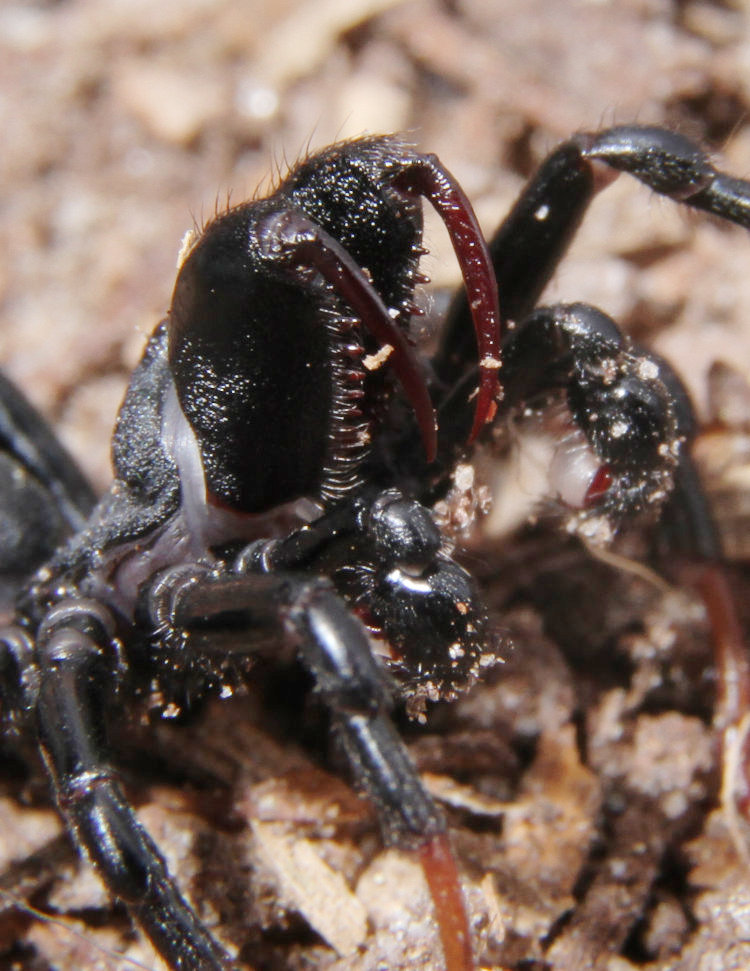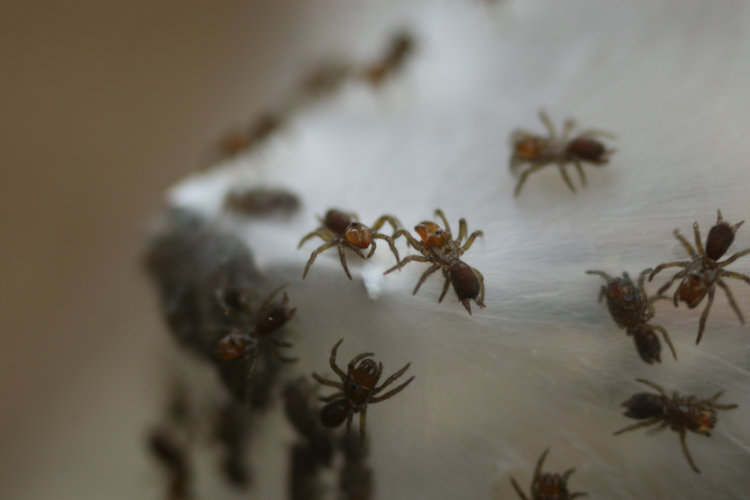Or at least, badass-looking, anyway. The specimen you’re about to see is only about 20mm in leg spread – not especially large as far as spiders go, and it only appears this impressive because we’re going in so close. This was found within my outside trash basket, which I have because the resin 3D printer produces some heavy fumes, as does the stuff used to clean it all up, and so I have a basket outside to discard this stuff into. The spider, however, probably only wandered in there by accident and couldn’t scale the smooth plastic sides. I vaguely recognized it but couldn’t quite place the Family, and needed some detail photos anyway.

I was still zeroing in on the flash exposure so this one is a little over-exposed, but that’s okay since it shows more detail from the pure black spider – I really should have set up a white box instead, but it was running late on a busy day. This is an Atlantic purseweb spider (Sphodros atlanticus,) and BugGuide.net provides very little information about the Family overall, much less the species – the identification was only pinned down through careful comparison of the images, after finding the general place to look through an Ecosia search. Other sources gave the habits and method of hunting, which is basically a small tube of silk against tree trunks that likes a lot like a small branch, and so I went out looking for just that, so far finding nothing.
But the real trait that attracts attention are those chelicerae.

Those are the appendages in front of the spider that house the fangs, in this particular case taking up better than a quarter of the total body length; the eyes are on top of that knob on the cephalothorax, here appearing practically in the middle of the body, while those two big blobs in front, almost like buttocks, are the chelicerae. Alongside those, down low and looking like forelegs, are the pedipalps (only one seen clearly here, the ‘leg’ not tipped in rust color,) and the club-ends of these peg this as a male. Which is what anyone is most likely to find wandering about anyway, because the females stay almost entirely within their web lairs and the males go out trying to locate them.
But we need to see those chelicerae better (yes, we do.)

The movement traits and especially the defensive posture when provoked (by poking gently towards the cephalothorax with a small probe) put me in mind of a trapdoor spider, though this was much smaller than that one. The reddish-brown fangs are clearly in evidence, ready to deal with hooligans, but also notable are the serrated ‘teeth’ beneath, able to grip prey quite handily it would seem. Again, we’re looking with high magnification – those fangs are 2mm in length at best, but that’s still pretty large for any spider, much less one this size. I never try to provoke actual bites at any time – I’ll let Schmidt do that – and I have no idea how toxic their venom is, but since it isn’t listed as distinctive in any source I’ve found so far, I’m guessing it isn’t as bad as this image would seem to imply.
Once I had the name ‘purseweb spider’ in hand, it brought to mind some shots that I’d gotten many moons ago, and I went looking for a comparison. Sure enough, I’d likely gotten the Family (Atypidae) at least before, as newborns just outside the nursery:

I got this shot just a little over ten years ago, while scouting out a new location for photos and not in possession of the macro flash, so these are by natural morning light under the forest canopy, and of course the spiderlings here are very small. But those huge chelicerae are plainly evident here, and more so as we crop in tighter.

Also noticeable are the long forked spinnerets at the hind end, which the adult has too, I just didn’t get a frame that showed them as well – I was concentrating on the chelicerae, if you haven’t fathomed that by now. But yeah, they are definitely funky and recognizable spiders, though next time, I’ll use a white box for the photos.



















































